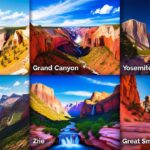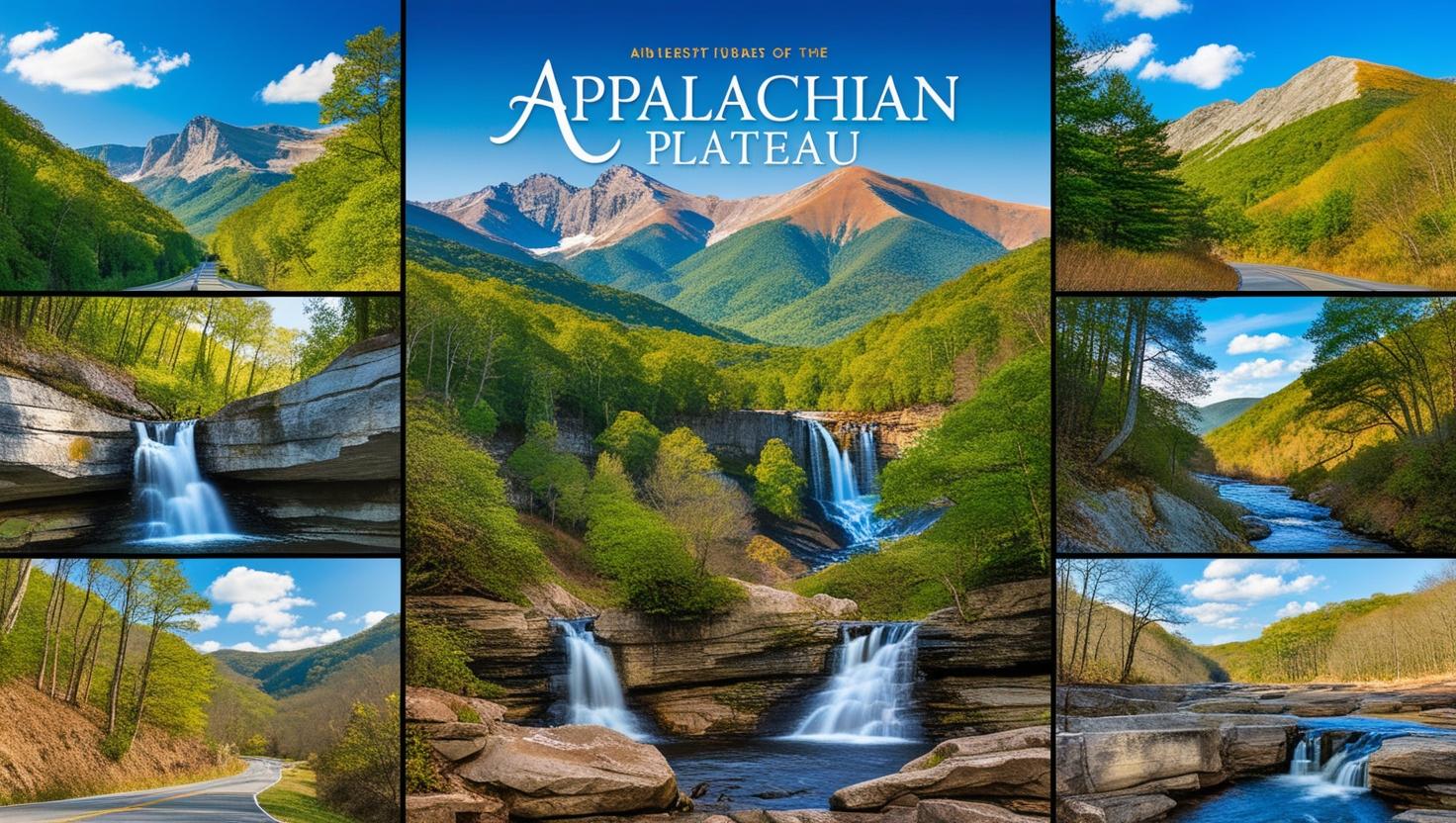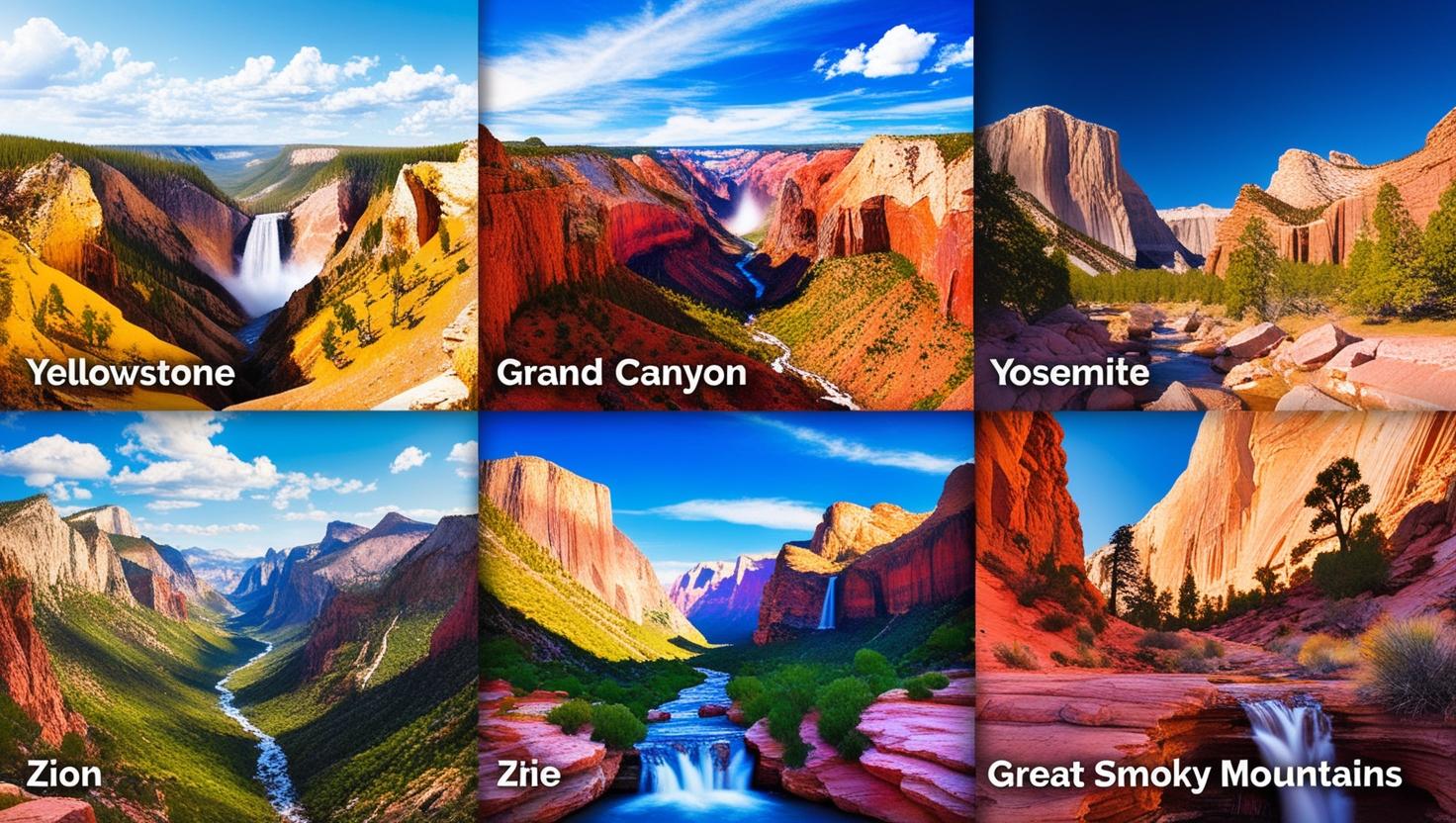The Appalachian Plateau is a stunning region that stretches across several states in the eastern United States, offering breathtaking landscapes, rich history, and diverse recreational activities. Whether you’re a nature enthusiast, history buff, or simply looking for a peaceful retreat, the Appalachian Plateau has something to offer. In this article, we’ll explore some of the must-visit places in the Appalachian Plateau, share anecdotes to make it engaging, and provide practical tips for your visit. “places to visit in the Appalachian Plateau.”
Introduction to the Appalachian Plateau
The Appalachian Plateau is a geological region that extends from New York to Alabama, encompassing parts of Pennsylvania, Ohio, West Virginia, Kentucky, Tennessee, and Georgia. Known for its rugged terrain, lush forests, and scenic vistas, the Appalachian Plateau is a paradise for outdoor enthusiasts. The region is characterized by its flat-topped hills, deep river valleys, and ancient rock formations.
Exploring the Appalachian Plateau
1. Allegheny National Forest, Pennsylvania

The Allegheny National Forest is a haven for nature lovers, offering over 500,000 acres of pristine wilderness. With numerous hiking trails, camping sites, and recreational opportunities, it’s an ideal destination for outdoor adventures. The forest is home to diverse wildlife, including black bears, white-tailed deer, and bald eagles.
Anecdote: Imagine setting up camp by the serene Allegheny Reservoir, the stars twinkling above, and the sound of owls hooting in the distance. It’s a place where you can truly disconnect from the hustle and bustle of everyday life and reconnect with nature.
2. New River Gorge, West Virginia

The New River Gorge is often referred to as the “Grand Canyon of the East” and is a popular destination for rock climbing, whitewater rafting, and hiking. The New River Gorge Bridge, one of the longest steel arch bridges in the world, offers stunning panoramic views of the gorge.
Anecdote: Picture yourself standing on the New River Gorge Bridge during the annual Bridge Day festival, watching brave souls BASE jump from the bridge into the gorge below. It’s an adrenaline-pumping experience you won’t forget.
3. Cumberland Gap National Historical Park, Kentucky

The Cumberland Gap National Historical Park is a site of historical significance and natural beauty. This pass through the Appalachian Mountains was a key route for early settlers moving westward. Today, visitors can explore hiking trails, historical exhibits, and breathtaking viewpoints.
Anecdote: Walking along the Wilderness Road Trail, you can almost hear the echoes of pioneers and Native Americans who once traversed this route. The sense of history is palpable, making it a must-visit for history enthusiasts.
4. Chattanooga, Tennessee

Chattanooga, located at the southern edge of the Appalachian Plateau, is a vibrant city known for its rich history, outdoor activities, and cultural attractions. The Tennessee Aquarium and Lookout Mountain are among the top attractions.
Anecdote: Take a ride on the Incline Railway to the top of Lookout Mountain, where you’ll be rewarded with breathtaking views of the Tennessee Valley. It’s a journey that combines history and natural beauty in one unforgettable experience.
5. Cloudland Canyon State Park, Georgia

Cloudland Canyon State Park in Georgia offers some of the most spectacular scenery in the Appalachian Plateau. The park features rugged canyons, waterfalls, and miles of hiking trails. The West Rim Loop Trail is particularly popular for its stunning vistas.
Anecdote: Imagine hiking along the rim of the canyon as the sun sets, casting a golden glow over the landscape. The sight of the waterfalls cascading into the canyon below is nothing short of magical.
6. Hocking Hills State Park, Ohio

Hocking Hills State Park is a gem in Ohio’s portion of the Appalachian Plateau. The park is renowned for its striking rock formations, caves, and waterfalls. Old Man’s Cave, Cedar Falls, and Ash Cave are among the must-see attractions.
Anecdote: Exploring the rocky trails of Old Man’s Cave, you might feel like an adventurer discovering hidden treasures. The lush greenery and the sound of waterfalls create a serene and mystical atmosphere.
Step-by-Step Guide to Planning Your Visit
Step 1: Research and Choose Your Destination
Start by researching the different places to visit in the Appalachian Plateau. Consider your interests, such as hiking, history, or scenic views, and choose a destination that aligns with your preferences.
Step 2: Plan Your Itinerary
Once you’ve chosen your destination, plan your itinerary. Make a list of the key attractions you want to visit, and allocate time for each. Don’t forget to include some downtime to relax and enjoy the natural beauty.
Step 3: Check Accessibility and Facilities
Before you go, check the accessibility and facilities of your chosen destination. Make sure there are adequate parking, restrooms, and visitor centers. If you plan to hike, ensure the trails are well-marked and suitable for your fitness level.
Step 4: Pack Appropriately
Pack appropriately for your trip. Bring comfortable clothing, sturdy hiking shoes, and any necessary gear for outdoor activities. Don’t forget essentials like water, snacks, a first aid kit, and a map of the area.
Step 5: Respect Nature and Local Communities
Remember to respect nature and local communities during your visit. Follow Leave No Trace principles, dispose of waste properly, and be mindful of wildlife. Support local businesses and engage with the community in a positive and respectful manner.
Frequently Asked Questions (FAQs)
1. What are some places to visit in the Appalachian Plateau?
Some notable places to visit in the Appalachian Plateau include Allegheny National Forest in Pennsylvania, New River Gorge in West Virginia, Cumberland Gap National Historical Park in Kentucky, Chattanooga in Tennessee, Cloudland Canyon State Park in Georgia, and Hocking Hills State Park in Ohio.
2. What activities can I do in the Appalachian Plateau?
The Appalachian Plateau offers a wide range of activities, including hiking, camping, rock climbing, whitewater rafting, and exploring historical sites. The region’s diverse landscapes and rich history provide ample opportunities for outdoor adventures and cultural experiences.
3. When is the best time to visit the Appalachian Plateau?
The best time to visit the Appalachian Plateau depends on your preferred activities. Spring and fall are ideal for hiking and outdoor activities due to mild temperatures and stunning foliage. Summer is perfect for water-based activities, while winter offers opportunities for snow sports in certain areas.
4. Are there any guided tours available in the Appalachian Plateau?
Yes, there are guided tours available for various attractions in the Appalachian Plateau. Many parks and historical sites offer ranger-led tours, guided hikes, and educational programs. Additionally, local tour companies provide guided adventures for activities like whitewater rafting and rock climbing.
5. How can I find more information about visiting the Appalachian Plateau?
For more information about visiting the Appalachian Plateau, you can visit official websites of national and state parks, tourism websites for specific states, and reputable travel resources. Websites like National Park Service and State Park systems offer valuable information and resources.







